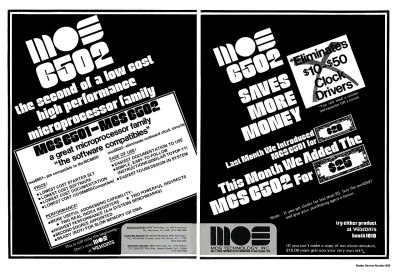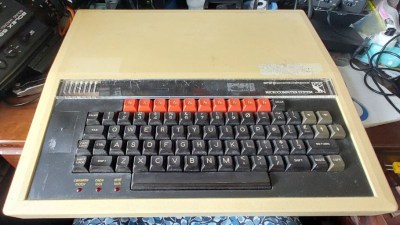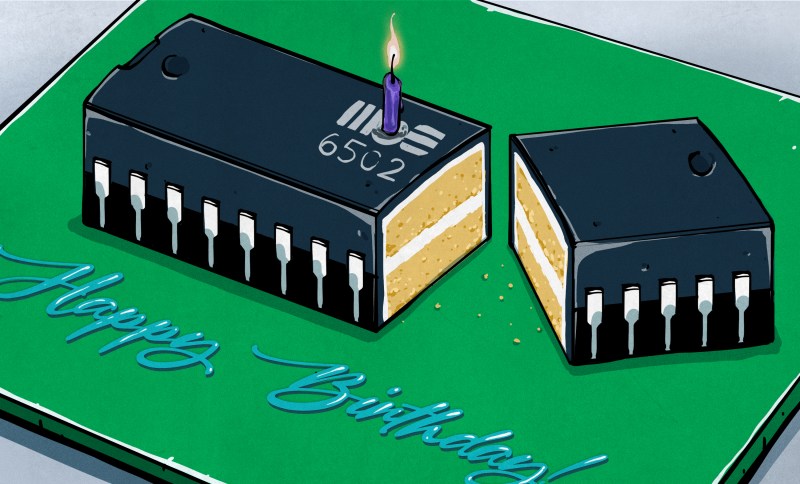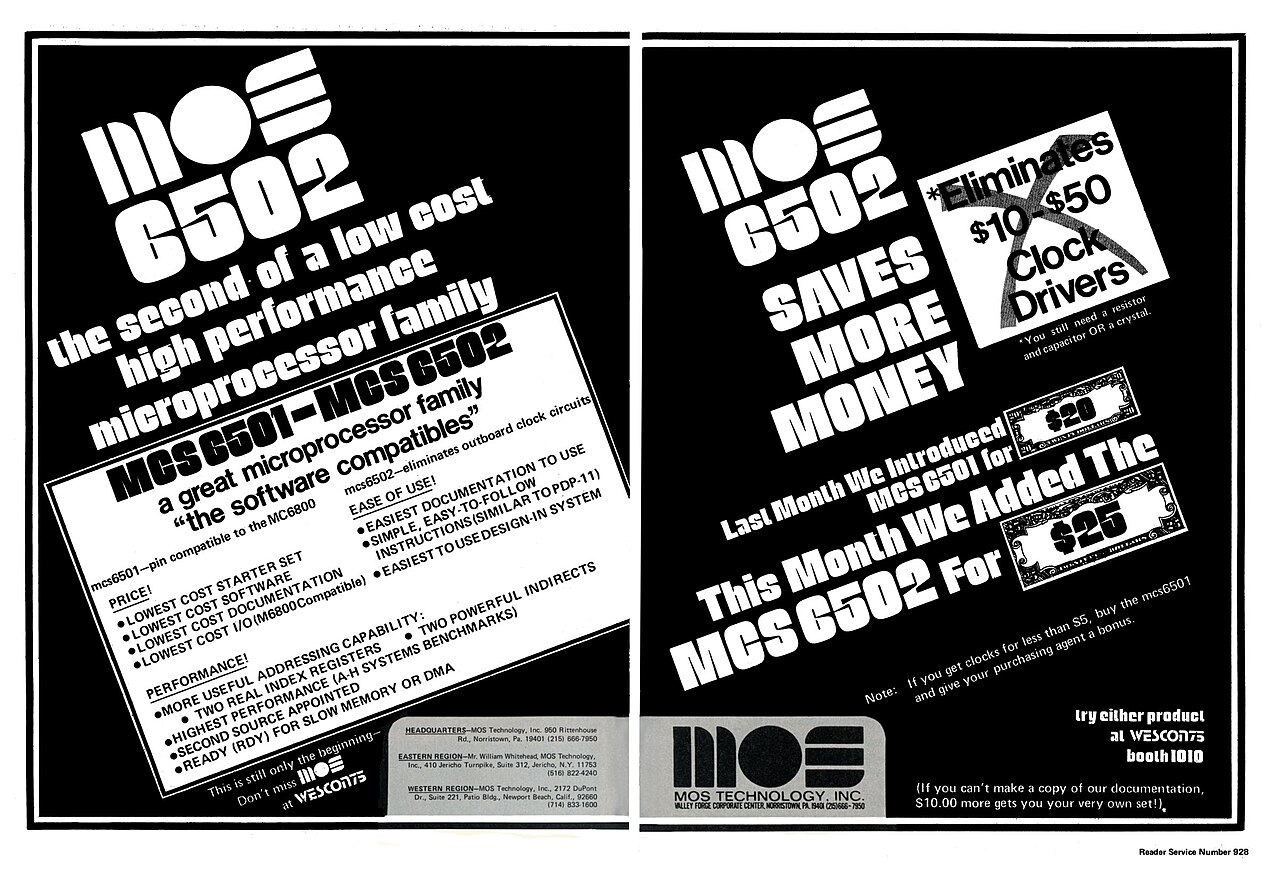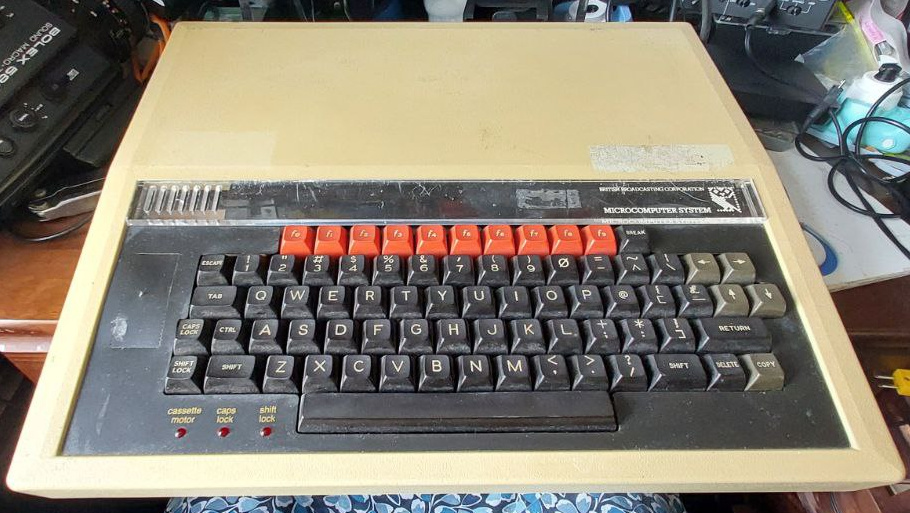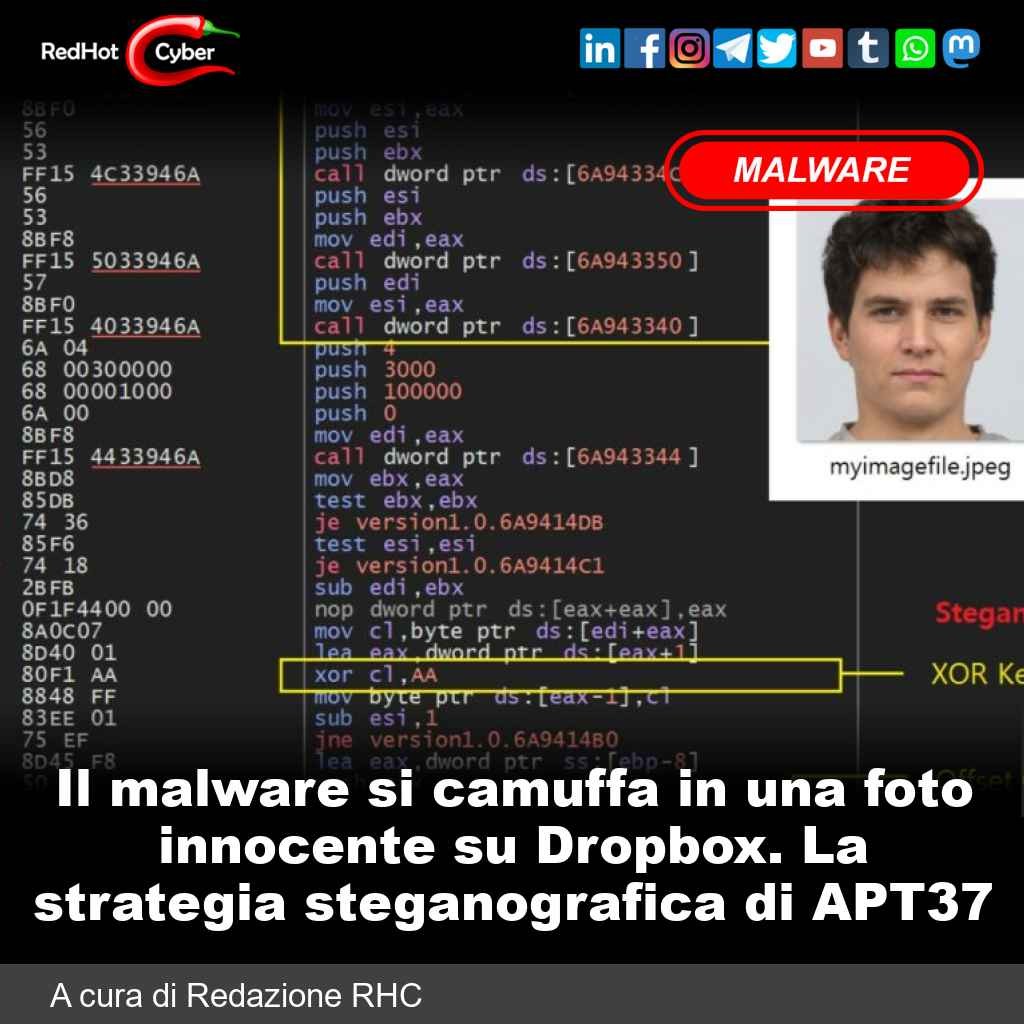Happy Birthday 6502
The MOS Technology 6502 is a microprocessor which casts a long shadow over the world of computing. Many of you will know it as the beating heart of so many famous 8-bit machines from the likes of Commodore, Apple, Acorn, and more, and it has retained enough success for a version to remain in production today. It’s still a surprise though, to note that this part is now fifty years old. Though there are several contenders for its birthday, the first adverts for it were in print by July 1975, and the first customers bought their chips in September of that year. It’s thus only fitting that in August 2025, we give this processor a retrospective.
The Moment Motorola Never Really Recovered From
The advert that started it all. MOS Technology, Public domain.
The story of the 6502’s conception is a fascinating tale of how the giants of the early mocroprocessor industry set about grappling with these new machines. In the earlier half of the 1970s, Chuck Peddle worked for Motorola, whose 6800 microprocessor reached the market in 1974. The 6800 was for its time complex, expensive, and difficult to manufacture, and Peddle’s response to this was a far simpler device with a slimmed-down instruction set that his contact with customers had convinced him the market was looking for: the 6502.
There’s a tale of Motorola officially ordering him to stop working on this idea, something he would later assert as such an abandonment of the technology that he could claim the IP for himself. Accompanied by a group of his Motorola 6800 colleagues, in the summer of 1974 he jumped ship for MOS Technology to pursue the design. What first emerged was the 6501, a chip pin-compatible with the 6800, followed soon after by the 6502, with the same core, but with an on-board clock oscillator.
My 6502-powered Beeb may be showing its age, but it remains one of the most comprehensively specified computers for its time I have ever used.
If you were one of the small group of very geeky kids in the early 1980s who really used their home computers instead of merely gaming it’s likely you are part of the only generation ever to have a playground one-upmanship over processor architectures. Those of us with a Z80 in our Sinclair machines would cite the higher clock speed, while the Commodore owners would talk about the 6502’s pipelined architecture and smaller instruction set.
With the benefit of many decades’ hindsight it’s fair to say they had a point, and one that the Z80’s ability to flip between two sets of registers on a dime couldn’t make up for. The 6502 was quick, it had a reliable manufacturing process, and since MOS Technology sold it to anyone for a surprisingly reasonable price rather than restricting it to big-bucks industrial customers, it or one of its many derivatives was a natural choice for much of the first generation of home computers and consoles. If you had an Acorn, an Atari, a Commodore, an Oric, or an Apple 8-bit machine you would have had one, and if you had a Nintendo console you also joined the 6502 club.
Just Who Is Still Buying A 6502?
It’s still not too difficult to find dedicated defenders of the 6502 among those now in their 50s geeks who owned an 8-bit computer when they were new. Just as with their Z80-fan friends, they come from an era when it was possible to fully comprehend the architecture of your computer at nearly gate level. It’s thus understandable that both architectures lingered on in the world of embedded computing long after their heyday on the desktop had passed, but it’s still a surprise to find the WDC version of the chip still in production. Unlike other surviving 8-bit architectures such as the 8051, this is the real thing in a 40-pin DIP rather than a core found embedded in other chips, so we’d be curious to know: aside from a small number of retrocomputing enthusiasts, who is still buying these things? The Z80 finally shuffled off this mortal coil last year, so how long has the WDC W65C02 got left? We’d be curious for your views.
Speaking personally, I had a foot in both camps. Like many British kids of the early 1980s I could save enough pocket money for a Z80-based Sinclair ZX81 of my own, but I had access to a room full of 6502-powered Acorn BBC Micros at school. I thus painstakingly hand-assembled Z80 code for the Sinclair, and was blown away by the built-in assembler in the Beeb. But did I have a favourite? Perhaps not, after all the most important lesson is one I only fully understood years later; that far more important than what architecture a computer uses is what you can do with it. And in that, to my profound sadness as a Sinclair fan, the 6502-powered BBC Micro won hands-down.
Header image: Dirk Oppelt, CC BY-SA 3.0.
